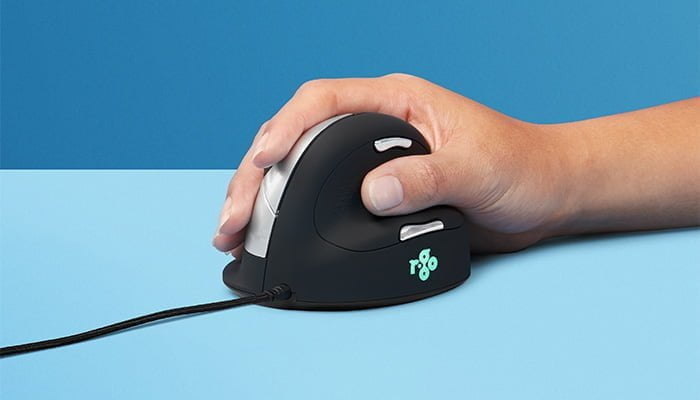To prevent and reduce RSI complaints, vertical ergonomic mice are increasingly used in the office world. But vertical mice still differ considerably from one another, wich doesn’t make your search for the perfect ergonomic mouse any easier. To help you on your way, here is a summary of what to look out for when comparing vertical mice.

Test on 3 points
To get a good impression of a vertical ergonomic mouse, it is important to test it. After all, every person has a different hand shape and size. And, not unimportantly, different preferences. Therefore, when testing it, at least pay attention to these 3 points:
Shape and comfort:
Hold the mouse for a moment and assess whether it feels comfortable. Is the shape and hand position right? Is the hand fully supported (including the thumb and little finger)? Do you need a size bigger or smaller? Are there no edges on it that feel irritating to your fingers?
Use:
Test the mouse for at least 10 minutes of general use: clicking, scrolling and moving. Does it feel natural or do you need to get used to it? Which muscles do you use when moving the mouse: are they large or small muscles? It is important to note here that small muscles and tendons can be overloaded faster than large muscles.
Muscle tension:
An independent ergonomist can measure the muscle tension (in use and at rest) of the forearm and shoulder muscles. With low muscle tension, the risk of RSI complaints is also much lower.
How does our HE Mouse perform?
An independent comparison study by a European registered ergonomist (Ergonomist, Eur.Erg.) compared 4 popular vertical mice: the Evoluent 4, the Handshoe Mouse, the 3M Anir Mouse and the HE Mouse by R-Go Tools.
Conclusion: although the choice of a computer mouse remains very personal, the HE Mouse gets the best overall score. Curious?


